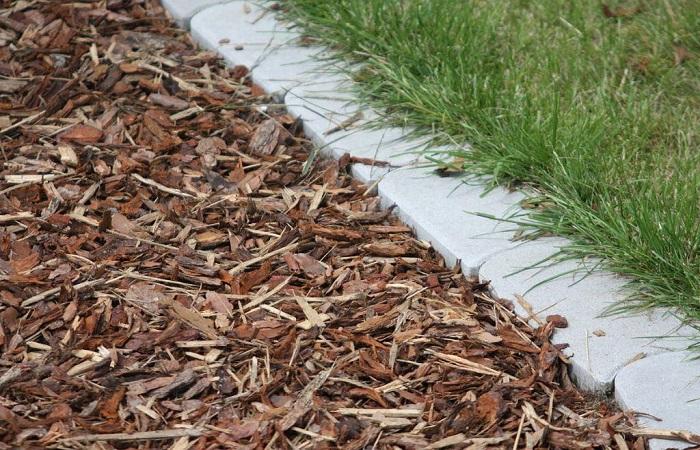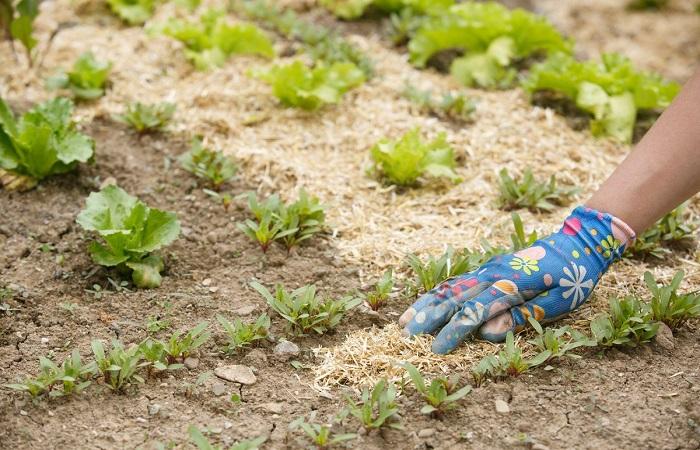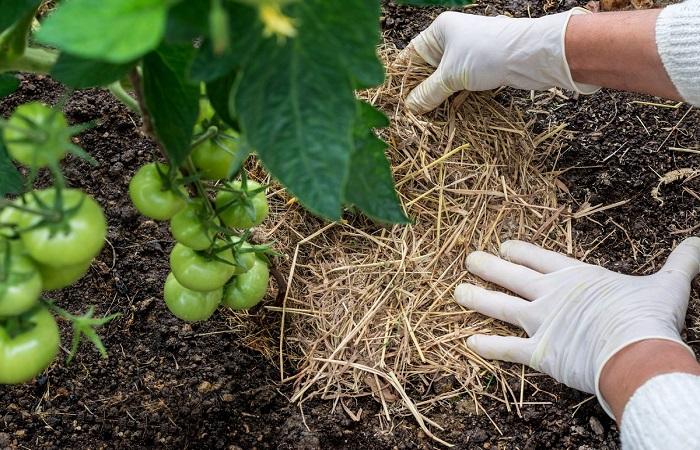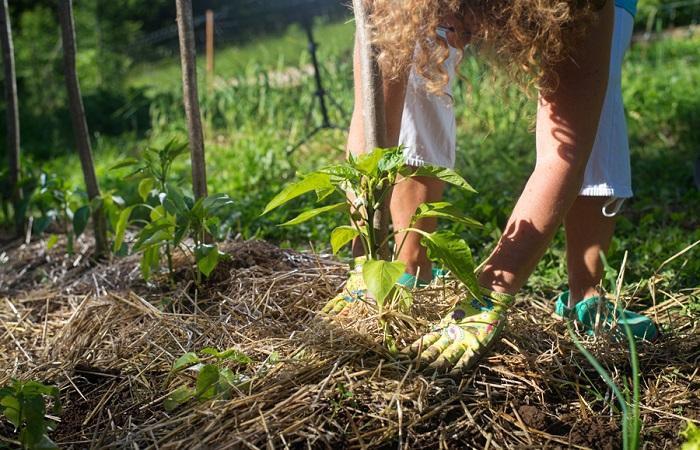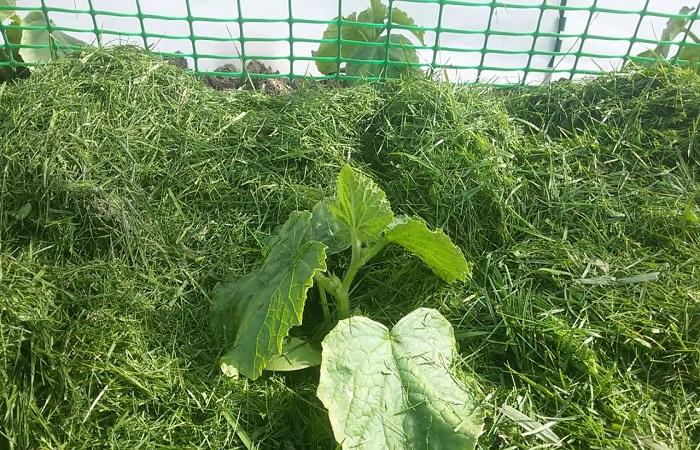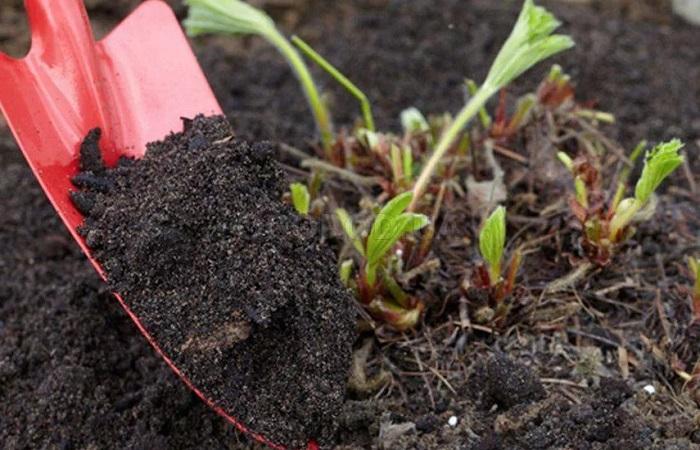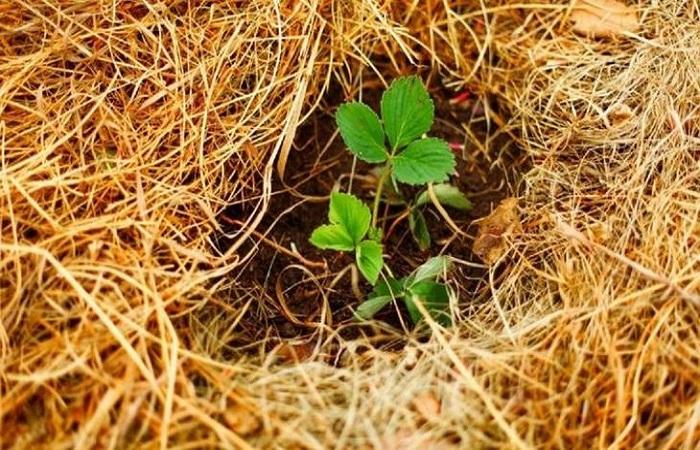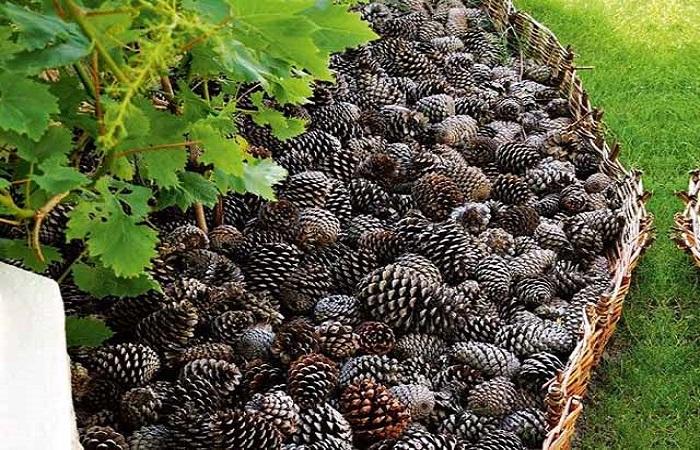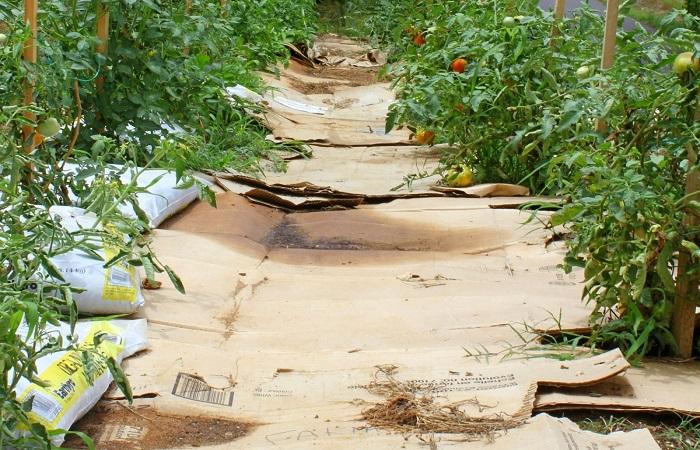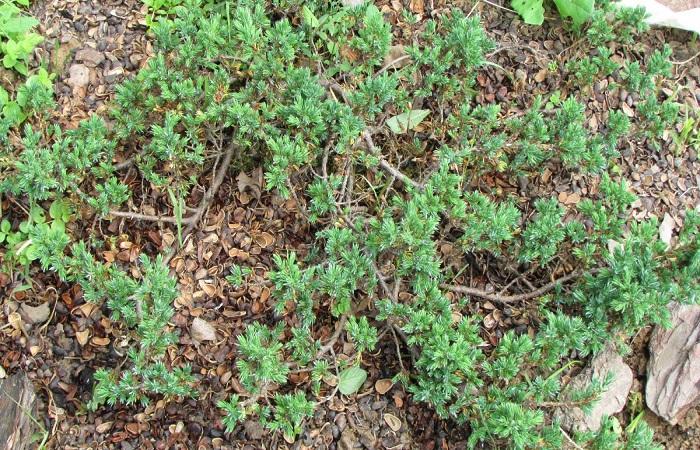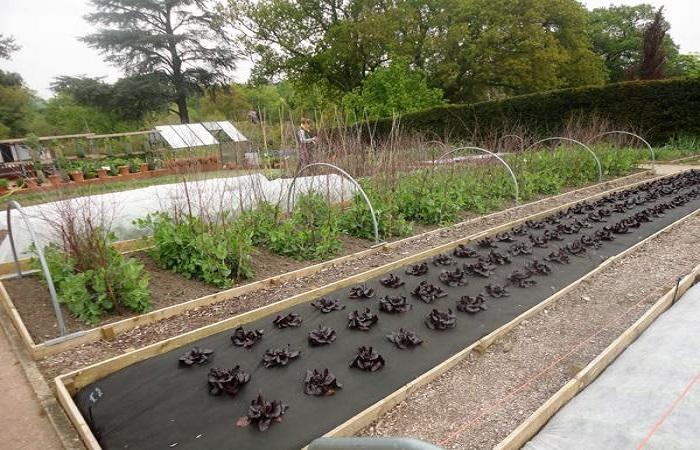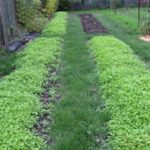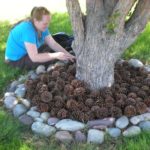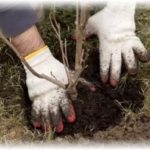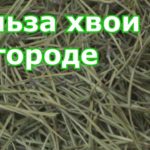Before using mulch on your garden plot, you need to understand what it is and why this material is needed in the garden. Experienced gardeners have been using organic and artificial material for many years and have highlighted the undeniable advantages of such agricultural techniques. Mulch not only helps retain moisture in the soil, but also helps increase yields and prevents the growth of weeds.
- What is mulching
- Pros and cons of use
- Types of mulch: choosing the best
- How and when to mulch beds?
- Instructions for use
- Mulching with grass
- Sawdust
- Peat
- Straw
- Humus and compost
- Cones
- Paper and cardboard
- Moss
- Wood chips from a shredder
- Pine nut shell
- Geotextile and gravel
- Geotextiles and bark
- Geotextiles and flagstones
- Is it necessary to mulch the soil in a greenhouse?
- Basic mistakes when mulching
What is mulching
Mulching is an important agricultural technique that allows you to keep the top layer of soil moist and loose, which is necessary for the full development of crops. Those gardeners who refuse this procedure are forced to constantly fight weeds, loosen the beds and spend a lot of time irrigating the plants. This means that labor costs for growing fruit crops increase.
The meaning of mulching is that a layer of organic or artificial materials is laid on top of the soil, without covering the cultivated plants themselves with it. Sawdust, film, humus and other available materials are used as mulch. In some cases, gardeners combine materials or add mineral fertilizers, in particular nitrogen.
This agrotechnical procedure is of greatest importance in southern, arid regions, where without shelter the soil quickly dries out, cracks and loses its fertility.
Pros and cons of use
Gardeners who have been using mulch on their garden plots for several years have highlighted the advantages and disadvantages of this agricultural procedure.
They include the following points as the advantages of laying a protective layer around cultivated plants:
- maintaining soil moisture for a long time even during dry periods;
- reducing water consumption for irrigation;
- protection of the root system of cultivated plants from overheating in the summer heat and freezing in winter;
- reducing labor costs and time for weeding out weeds, since the layer does not allow it to break through to the surface of the earth;
- absence of contamination of berries and vegetables located low above the ground even in rainy seasons and preservation of the decorative appearance of fruits;
- improving soil water and air permeability, as well as structure and fertility, thanks to the useful components included in organic mulch;
- preventing pathogens from entering berries and fruits from the soil during irrigation;
- creating a favorable environment for the reproduction of beneficial microorganisms and earthworms;
- preventing leaching and weathering of soil from under plants, thereby strengthening the root system;
- feeding plants with useful substances after the mulch layer has overheated (applies only to organic materials);
- the ability to regulate soil acidity depending on the material used;
- creating a decorative look on the site - beds covered with mulch look neat and well-groomed.
Despite the sufficient number of advantages of mulching, this agricultural technique also has its disadvantages that must be taken into account when starting the procedure.
Gardeners include the following disadvantages of laying a protective layer on beds:
- on heavy clay soils, with close proximity to groundwater and in rainy seasons, organic mulch begins to rot, which is fraught with the development of fungal diseases, the pathogens of which multiply well in damp conditions. In addition, during the process of decay, useful substances necessary for crops to bear fruit and develop are drawn out of the soil;
- if you lay a protective layer with the arrival of the first spring days, it will prevent the timely warming of the ground and delay the germination of winter plants, so experienced gardeners recommend not rushing to lay mulch until the soil has warmed up properly;
- When using organic materials, there is a risk that not only beneficial microorganisms, but also pests, including quite large ones like snails or mice, will settle in the mulch.
- If you use mowed grass on which seeds have already formed as a protective layer, you can not reduce, but increase the number of weeds in your garden plot.
Types of mulch: choosing the best
When planning to use a mulch layer in your garden, you must first understand what materials are used for this, what their advantages and disadvantages are. Mulch is divided into two main categories - organic and inorganic:
- Organic materials include sawdust, pine needles, grass clippings, bark and leaves, waste cardboard and newspapers. The peculiarity of such mulch is that over time it decomposes on its own and saturates the soil in the garden with useful substances. However, it must be remembered that such material will have to be periodically replaced with fresh material. But, even despite this drawback, many gardeners prefer organic material, since it is natural and does not harm the soil and crops.
- Inorganic materials include all those that do not decompose on their own and therefore do not need periodic replacement. This can be a black polymer film, small crushed stone, broken brick (not silicate brick), expanded clay, roofing felt and non-woven materials.Such mulch is preferred if it is necessary to give the site a decorative and well-groomed appearance, and it is also an ideal option if it is necessary to curb the growth of weeds. It is worth considering that materials such as crushed stone and crushed brick have the ability to heat the soil, which is good in the spring and can harm plants in the hot summer.
How and when to mulch beds?
Gardeners most often begin laying a mulch layer in the spring, when the snow cover has completely melted and the soil has warmed up. First, the roots of perennial weeds are removed from the garden and fertilizers are added.
After this, the selected material is laid out, which will protect the crops from overheating on hot summer days and will not allow moisture to evaporate. When the time comes to sow seeds or plant prepared seedlings, carefully move the mulch apart. However, another method can be used - first, the beds are planted with cultivated plants, and only after that a mulch layer is laid out between the rows.
The second period when it is necessary to use mulch occurs in the month of October, when the crops have already been harvested and the soil has been saturated with moisture from the autumn rains. Just as in the spring, the soil is first prepared by removing weeds and applying the necessary fertilizing. If the gardener plans to sow some crops before winter, then the material can be placed on top of the crops.
The advantages of autumn mulching are that the material will protect plants from freezing, and in addition, thanks to the layer, it will be possible to retain the snow necessary to moisten the soil on the site. With the arrival of spring, the material can be replaced completely, or you can simply add fresh material to compensate for winter losses.
Instructions for use
In order for the mulch layer to fulfill its functions and bring only benefits to cultural and ornamental plants, you must follow the instructions for use.
Mulching with grass
When planning to use grass as a mulch layer for the garden, you need to figure out what kind of vegetation is suitable for this purpose and how to properly prepare it. Dry, fresh and partially rotten grass is used to create a protective layer. Vegetation with signs of diseases or traces of pests, as well as specimens that already have seed pods, should not be taken for the mulch layer.
The method of application depends on what kind of grass the gardener plans to use:
- Fresh. In this case, there is no stage of preliminary preparation of the material. The preferred option is green manure, which is mowed and lightly trampled with feet so that the process of juice secretion begins in them and rotting begins. The advantage of fresh grass is that it saturates the soil with nitrogen, so it is used in the first half of the season.
- Dry. The pre-selected grass is mowed and laid out under a canopy in a thin layer to dry. Turn the material over periodically so that it dries evenly and does not begin to rot. When the mulch is completely ready, use it to spread it between the rows and near the trees.The advantage of dry grass is that, if properly stored, it retains its quality throughout the year, and it can be used in early spring, when there is no fresh vegetation yet.
- Partially rotted. The cut grass is placed in a barrel or composter and waited for about a week. During this time, the vegetation will acquire the desired consistency and can be laid out in the garden.
Sawdust
It is necessary to take into account that fresh sawdust cannot be used to mulch cultivated plants in the garden; they are first prepared by turning them into humus. Naturally, sawdust takes a very long time to rot, so it is recommended to speed up this process. Lay out layers of sawdust, manure, ash and food waste, adding urea at the rate of 1 kg per 100 kg of wood waste.
You can use fresh sawdust to decorate paths in the garden or flower beds. Gardeners also use this material in raspberry fields, since the crop is not afraid of acidic soil and bears fruit normally in it.
Peat
You can mulch beds with vegetables and other crops with peat, and it should be slightly acidic and decomposed. Lowland peat has these characteristics, which is why it is most often used. The riding material is too loose, so even a light wind blows it away.
A mulch layer is placed with a height of 1 to 7 cm. Experienced gardeners recommend using this material exclusively on rows of crops. If the soil on the site is poor, mineral fertilizers are added to the peat, thus combining two procedures.
Straw
Straw as a mulching material is used for both cultivated and ornamental plants.It is preferable to take straw from green manure grown on the site. Before use, it should be chopped into pieces no longer than 5 cm.
For young plants in the spring, it is better to take rotted straw, since fresh straw can damage the delicate skin of the plants. To do this, it is placed in a compost heap in the fall; by the beginning of the season, the material will be ready for laying out on the beds.
Humus and compost
Compost is considered one of the best materials for creating a mulch layer. Its only drawback is that it is done in advance. Throughout the season, plant residues are placed in a compost heap, sprinkled with urea; after a year, the material is ready for use as mulch.
If the soil in the garden is poor, it is recommended to use humus as a protective layer. It saturates the soil with nitrogen, which crops need in the spring for rapid growth. This is an ideal option for fruit trees and shrubs, as well as grape plantations.
Cones
Mulching the beds with pine or spruce cones allows you not only to retain moisture in the soil, but also to create an attractive appearance on the site. This material is also often used in flower beds with ornamental plants.
Typically, the pine cones are mixed with a small amount of crushed bark and moss.
Paper and cardboard
In gardening, paper and cardboard are also used as mulch, although they are less useful than sawdust or compost. The material is used in two ways - cut into strips 1 cm thick and laid in a 15 cm layer in the desired place, or take whole sheets of cardboard and lay them out in several layers so that there are no gaps between them.
Moss
When planning to use moss as mulch, you must remember that it slightly acidifies the soil, which is not suitable for some plants. It is used to create a protective layer under trees and shrubs, as well as ornamental crops. The layer should be about 15 cm.
Wood chips from a shredder
If a gardener has a shredder on his farm, he can shred dry branches and other plant materials and use them as a mulch layer.
Pine nut shell
This material is not only useful for the soil, but also durable, so you don’t have to change the protective layer often. The shells are used in flower beds, under ornamental shrubs and coniferous crops.
Geotextile and gravel
This option is suitable for creating a mulch layer under coniferous plants. First, a layer of geotextile material is spread, and fine gravel is scattered over it.
Geotextiles and bark
A popular option for decorating local areas and garden plots. A layer of geotextile is laid on the ground, and bark, preferably pine, is poured on top.
Geotextiles and flagstones
Flagstone is durable, but expensive, so it is used in combination with crushed bark, laying them on a geotextile backing.
Is it necessary to mulch the soil in a greenhouse?
Experienced gardeners claim that a mulch layer in a greenhouse will also be beneficial if you choose the right material and carry out the procedure. To do this, it is better to use organic materials - humus, sawdust, pine needles, the layer should be from 5 to 7 cm.
Basic mistakes when mulching
Common mistakes that gardeners make when mulching a plot include: improper preparation and composition of the mulch, inappropriate timing for the procedure, untimely replacement of the old layer, too thin or thick a layer of material, too frequent watering of the beds.

